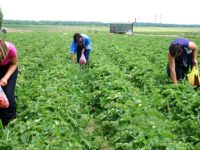Australia’s agricultural sector is set for another profitable year ahead with the gross value of agricultural production forecast to be on track for a fourth consecutive year of growth in 2021-22.
According to the latest Rabobank report, the Australian Agribusiness Outlook for 2022, high to record-high agricultural commodity prices and production volumes reaching record levels in some Australian commodities represent a continued recovery from the 2017-2019 drought and positions Australian agriculture for a strong year ahead.
The Rabobank Rural Commodity Price Index, which tracks local prices of key commodities, is forecast to ease from record highs reached in December 2021 over the course of this year, albeit to still sit five per cent above the five-year average (and 16 per cent above the pre-COVID five-year average) by the year’s end.
RaboResearch senior commodities analyst Cheryl Kalisch Gordon said while there will be some pressure on farming margins in 2022 compared with 2021, another favourable year was expected for Australian agriculture.
“There was a combination of drought and adverse weather in key cropping regions around the world, strong stockpiling demand in the face of potential food shortages along with COVID-induced labour shortages which impacted intensively-produced agri products and transport,” Gordon said. “This delivered clouds to agriculture sectors in many regions of the world and a silver lining for Australian agriculture.”
Gordon added that 2021 had been a “once in a blue moon” year for Australia’s agricultural sector, with very strong prices, with the high pricing coinciding with “favourable to very favourable” Australian production conditions.
“This second straight year of increasing commodity prices coincided with again favourable to very-favourable Australian production conditions,” Gordon said. “And for those commodity sectors where production has been lower, high pricing still delivered strongly profitable positions.”
At the same time, the bank expects the year ahead will bring “less pronounced opportunities” for Australian agriculture. Meanwhile, the outlook is mixed for Australia’s agriculture production.
“At this point, we can’t expect a repeat of the record grain and oilseed harvest we’ve seen for the 2021/22 season,” Gordon said. “Although for livestock, we do expect year-on-year lifts in slaughter numbers for both cattle and sheep, given the extended period of good seasonal conditions we’ve seen in most regions that have enabled some rebuilding of stock numbers.”
The report noted that 2022 will also bring some headwinds for Australia’s agricultural sector. This will include the ongoing impacts of COVID and, on top of it, the pervasive challenge of inflation, the global policy tightening around economic stimulus measures, supply chain issues, and geopolitical tensions
“Getting the policy settings on reducing stimulus and managing inflation will be critical to maintaining economic growth and consumer demand in many economies, and failure to get this right could curb demand in some of our markets for some, especially more discretionary, purchases,” Gordon said. “However, as markets unwind, we expect Australia may need to work harder on diversifying into alternative destinations.”
The report says with Australian agriculture positioned for another positive year ahead, it presents an ideal opportunity for the sector to prepare for future times when “the sun is not shining so brightly in its favour”. This included preparing for an increase in margin pressures (when global prices decline and Australian farm returns come under pressure) , diversifying markets and trading relationships, and equipping farm businesses for future droughts and climate change.













